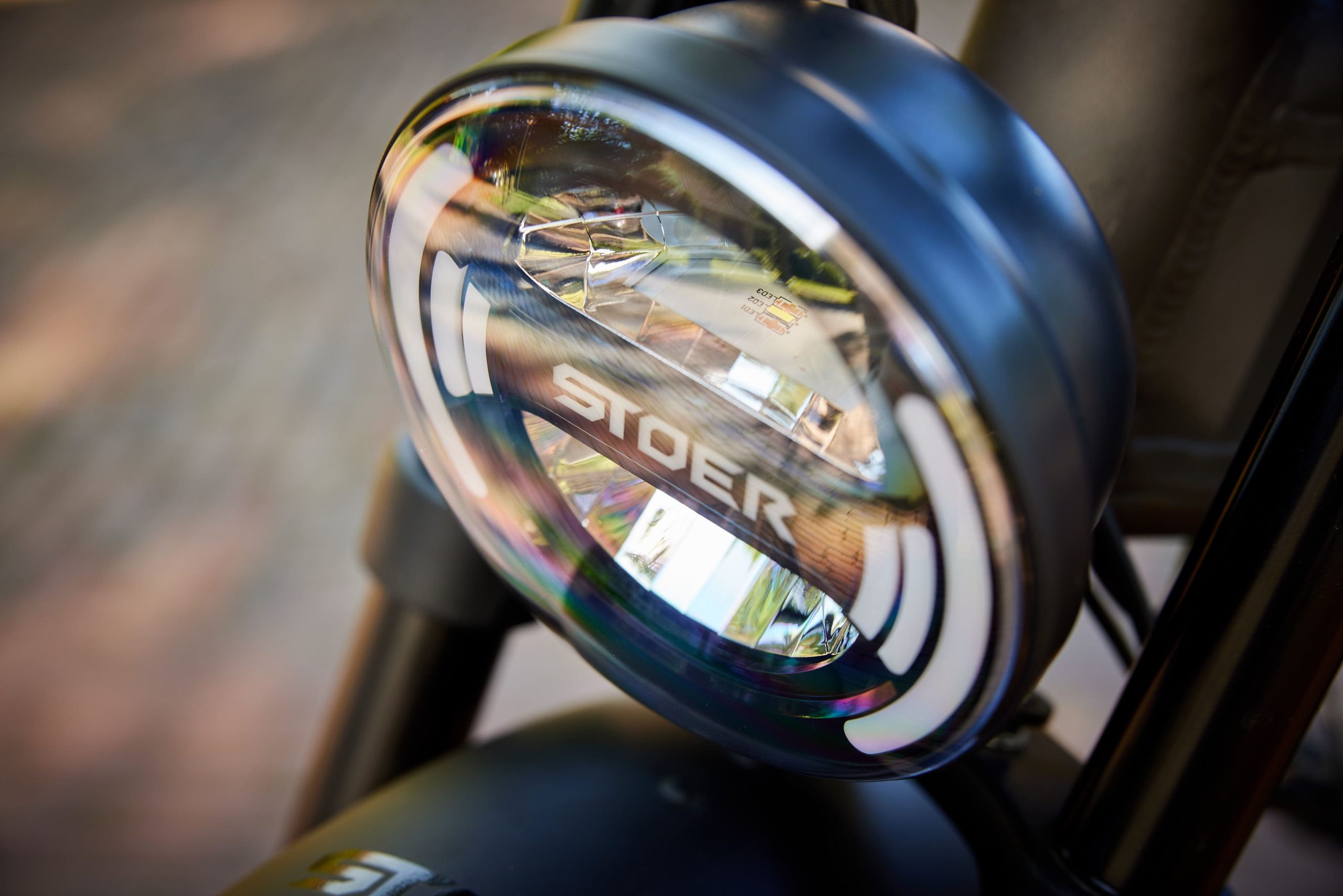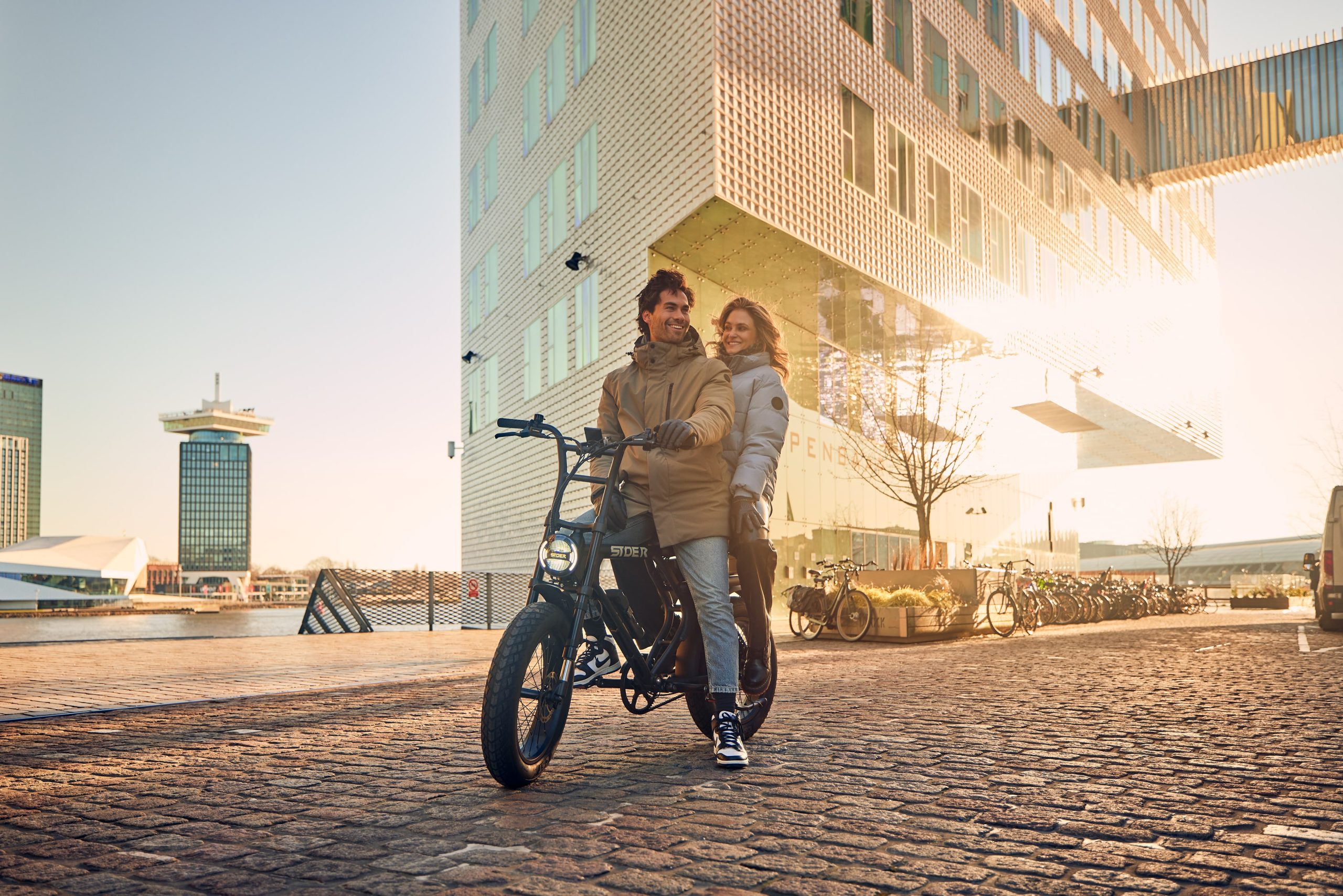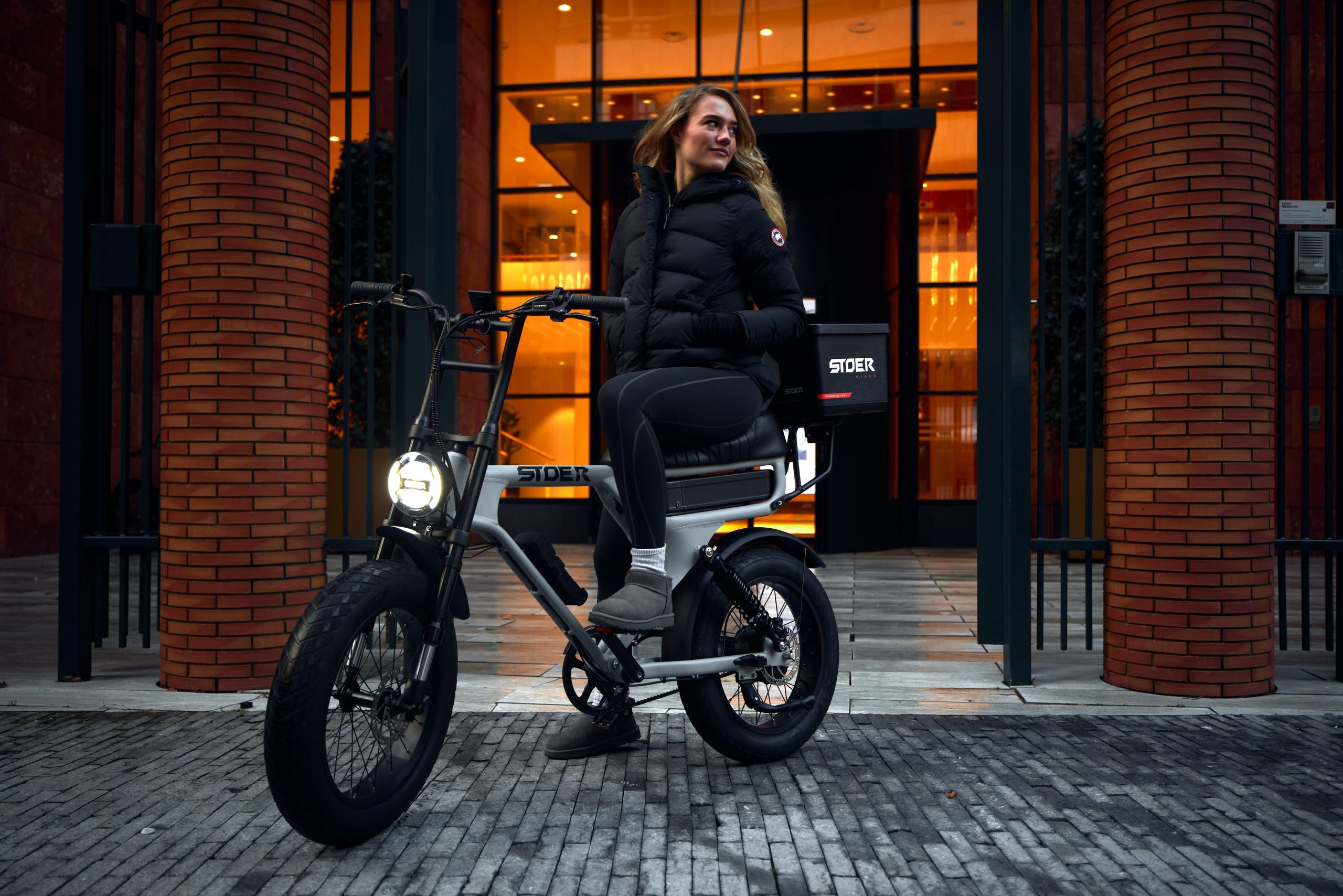The cycling landscape is undergoing an exciting revolution with the rise of electric bikes. In particular, the spotlight is shining on a new e-bike variant: the electric fatbike. In this article, discover everything you need to know about this exciting innovation, including benefits, legal aspects and our startup's role in this booming market. Electric fatbikes, also known as e-fatbikes or fat tire e-bikes, are electric bikes with wide tires that offer benefits such as improved traction and stability, especially on unpaved terrain. This article examines the differences between e-bikes and fatbikes, the laws and regulations surrounding fatbikes in the Netherlands, and the impact of electric fatbikes on mobility and sustainability.
Is the electric fatbike the future of e-mobility?
1. What is an electric fatbike?
An electric fatbike, also known as an e-fatbike or fat tire e-bike, is a special type of electric bicycle that stands out because of its wide tires. The term "fat" refers to the remarkably wide tires that are usually between 4 and 5 inches wide, much wider than the tires of traditional bicycles. These wide tires give the bike its name and are an essential feature of a fatbike.
Electric assistance is another important aspect of an e-fat bike. These bikes are equipped with an electric motor and a battery that allows the cyclist to benefit from pedal assistance. The motor assists in pedaling and provides extra power, which is especially useful when cycling on difficult terrain, such as sand, snow, mud, rocky trails and hills.
Electric fatbikes are designed to handle various terrains and offer more stability and grip thanks to their wide tires. They are popular with adventure ride enthusiasts, off-road bikers and people looking for a comfortable and powerful electric means of transportation for a variety of conditions.
In essence, an electric fatbike combines the benefits of electric pedal assistance with the ability to tackle rough, challenging terrain, making them an excellent choice for adventure cyclists and off-road riding enthusiasts.

2. Differences between an e-bike and a fatbike
The main difference between an e-bike and a fatbike lies in their design, intended use and specific features. Here is a brief explanation of the difference.
Tire design: An e-bike usually has standard tires similar to those of traditional bicycles. These tires are narrower and designed for general use on paved roads and bike paths. A fatbike is distinguished by its wide tires, usually between 4 and 5 inches wide. These extra-wide tires are specially designed to provide stability and grip on rough, unpaved terrain, such as sand, snow, mud and rocky trails.
Intended use: E-bikes are designed for general use and are often used for commuting, recreational cycling on paved roads and bike paths, and covering longer distances with pedal assistance. Fatbikes are specifically designed for adventure cycling and off-road riding. They thrive on challenging terrain and are ideal for adventurers who enjoy exploring off-road trails, such as beaches, snow-covered paths, and unpaved trails. In the Netherlands, you also see fatbikes a lot more in cities and towns
Tire Characteristics: The tires of an e-bike are designed for efficiency on paved roads, so they are less wide and have less rolling resistance. A fatbike's wide tires offer significantly more stability and grip on uneven, soft or slippery surfaces. They float, so to speak, on top of soft terrain, making them well suited to sandy beaches or snowy roads.
Electric support: Both e-bikes and fatbikes can have electric pedal assistance. The difference lies in the intended use of this support. E-bikes with narrow tires are more focused on facilitating everyday cycling on paved roads, while e-fatbikes combine electric assistance with off-road capabilities for adventure riding.
Want to know even more about the differences? Then read the comprehensive blog On the differences between the e-bike and the e-fat bike.

3. Laws and regulations surrounding fatbikes in the Netherlands.
The laws and regulations regarding fatbikes in the Netherlands can vary and are subject to change, so it is important to stay up-to-date with the latest information. However, here is an overview of the most important aspects of the current laws and regulations surrounding fatbikes in the Netherlands in 2023 and 2024:
- Definition as bicycle: Fatbikes are generally considered bicycles in the Netherlands, provided they meet specific criteria. These criteria include maximum engine power and maximum speed.
- Maximum speed and engine power: Electric fatbikes must typically meet the following specifications: Maximum speed of 25 kilometers per hour (km/h): A fatbike must not be able to travel faster than 25 km/h using the electric assistance. Motor power no higher than 250 watts: The power of the fatbike's electric motor should usually not exceed 250 watts.
- Traffic regulations: Although fatbikes have off-road capabilities, on public roads they must follow the same traffic rules as regular bikes. This includes respecting traffic lights, stop signs and other traffic regulations.
- Insurance and helmet requirements: Fatbikes are generally subject to the same insurance requirement as regular bikes. This means no mandatory liability insurance (third-party insurance) is required. However, there is no requirement to wear a helmet when riding a fatbike, unless required by local regulations.
- Use on unpaved trails and terrain: Fatbikes are ideally suited for use on unpaved trails and rugged terrain. They can be used on forest trails, sandy beaches, muddy trails and other off-road locations. However, it is important to respect natural areas and private lands and follow local rules and regulations regarding their use.
It is essential to understand that laws and regulations may vary by municipality and province, so it is advisable to consult local regulations and contact local authorities or agencies for specific information about fatbike use in specific locations. Always stay abreast of any changes in legislation to avoid problems while riding your fatbike in the Netherlands.

4. The future of e-bikes and fatbikes
The future of e-mobility, with a specific focus on electric bicycles (e-bikes), looks promising and includes several trends and developments:
- Increase in popularity: E-bikes have gained significant popularity in recent years, and this trend is likely to continue. People are discovering the benefits of e-bikes, such as easier and faster commuting, healthy exercise, and reducing their carbon footprint.
- Diversification of e-bike models: Manufacturers are developing more and more e-bike models to meet different needs. These include city bikes, mountain bikes, electric folding bikes and even cargo e-bikes for transporting goods.
- Technological progress: The technology behind e-bikes continues to evolve, making them lighter, more powerful and more efficient. Improvements in battery capacity, motor technology and connectivity will further enhance the e-bike experience.
- Sustainability and Environment: With growing awareness of environmental and health issues, e-bikes will become increasingly attractive. They emit no harmful gases and help reduce traffic congestion and air pollution.
- Integration with public transportation: E-bikes are increasingly being integrated into public transport, allowing people to combine their journey by train, streetcar or bus with the use of an e-bike for the "last mile." This increases mobility options in urban areas.
- Improved infrastructure: Many cities are investing in creating better bike lanes and infrastructure, which improves the safety and attractiveness of e-bikes for commuters.
- E-bike sharing and rentals: E-bike-sharing services are gaining ground, allowing people without their own e-bike to easily use one for short trips, promoting mobility in urban areas.
- Price drops: With the continued development of mass production and technology, e-bikes are expected to become more affordable, making them more accessible to a wider audience.
- Regulation and safety: Governments are expected to continue to adjust regulations around e-bikes to ensure safety and regulate their use. This may include speed limits, helmet use and specific traffic regulations.
Overall, the future of e-mobility, with a focus on e-bikes, will be characterized by continued growth, technological improvements and greater integration into everyday life. E-bikes will play an important role in reducing traffic congestion, promoting sustainable mobility and encouraging healthier lifestyles.

I would like to participate in sustainability, where can I buy an e-fatbike?
Electric fatbikes are more than just hype; they represent a lifestyle and offer a glimpse into the future of cycling. Whether you are an avid cyclist or looking for a more sustainable mode of transportation, an e-fatbike can be an excellent choice. You can buy electric fatbikes from a variety of places, including bike stores, online stores such as Vaneman Bikestore or specialty stores. Also check out the website of STOER Bikes for advice on buying an e-bike. It is always recommended to test the bike before you buy and inquire about warranty and maintenance options. Want to learn more about premium fatbikes? Then read the article from STOER Bikes about a fatbike with belt drive.